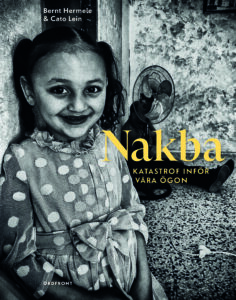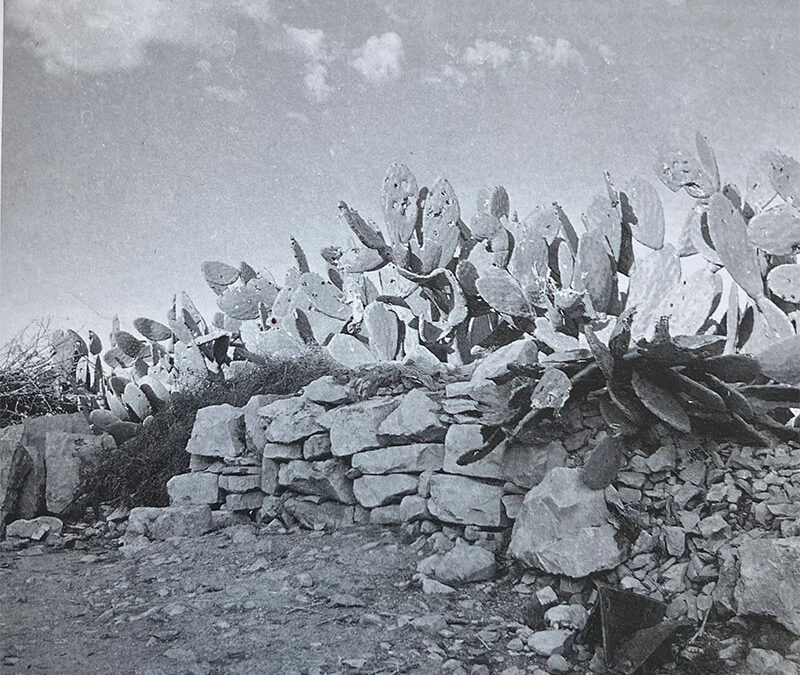
Hur bildsätter man en massaker om man inte vill visa upp döda kroppar?
Svaret fann jag i Ariella Azoulays bok ”From Palestine to Israel – A Photographic Record of Destruction and State Formation, 1947-1950” (Pluto Press, 2011). Där såg jag första gången den här kaktusbilden, tagen av en Associated Press-fotograf i Deir Yasin, i april 1948.
I boken skriver Azoulay:
”The people carrying out the massacre went from house to house. First, grenades were thrown into the buildings. Those not killed instantly were slaughtered in horrible ways, and women were raped. Those who fled the houses were slaughtered outside. A total of 110 people. A few dozen of the survivors – men, women and children – who had been taken prisoner were trucked in a ”victory march” thru Jerusalem´s Jewish Quarter and then returned to the village. About 20 were then shot to death. Some of those fatal shots pierced the prickly pear hedges.”
Jag ville ha med den här bilden i min Nakba-bok, men misslyckades med att få kontakt med AP. Boken fick klara sig utan kaktusbilden.
Igår hittade jag bilden igen, av en tillfällighet, på Jerusalem Story. Deras bildtext lyder:
“Bullet-riddles cactus (sabr) in the village of Deir Yasin just outside om Jerualem where 100 Palestinians were massacred by Irgun and Lehi (Stern) forces on April 9, 1948.”
Bilden kom alltså inte med i min bok, men via Google bildsök upptäckte jag att kaktus-bilden trots allt var spridd, bland annat av Aljazeeera, Haaretz, Mondoweis och Places Journal.
För mig fortsätter bilden att göra sig påmind, kanske för att den ändå lyckas göra en massaker till något som går att nästan begripa.

Info om “From Palestine to Israel” hittar du här.

Info om Nakba-boken hittar du här: https://bernthermele.se/bocker/
Jerusalem Story hittar du här.

